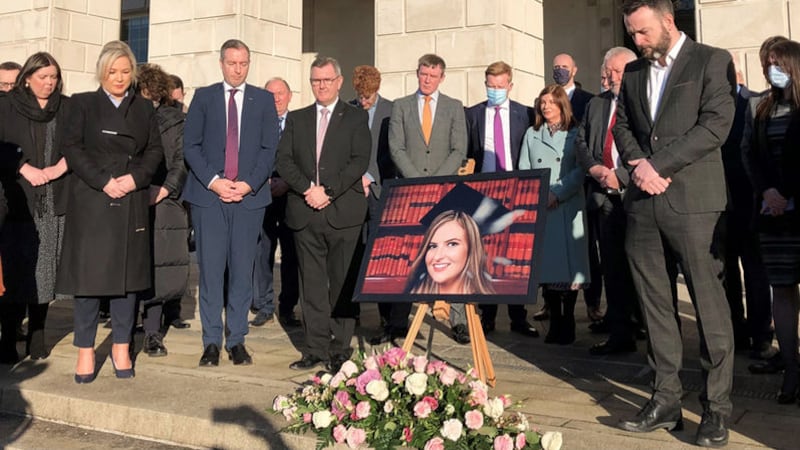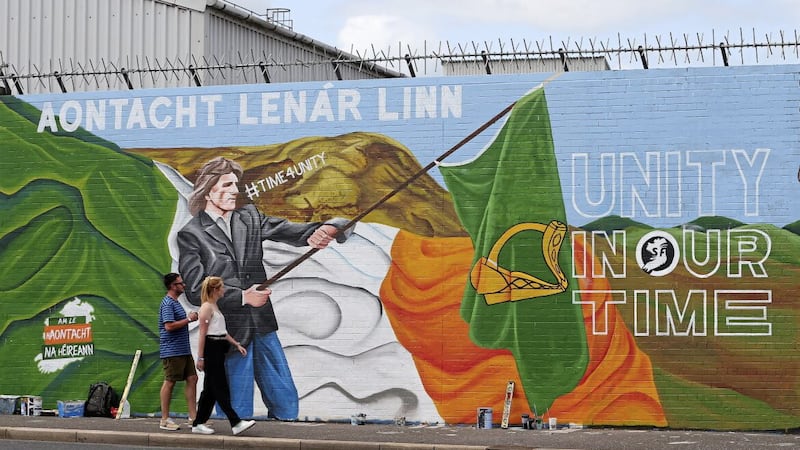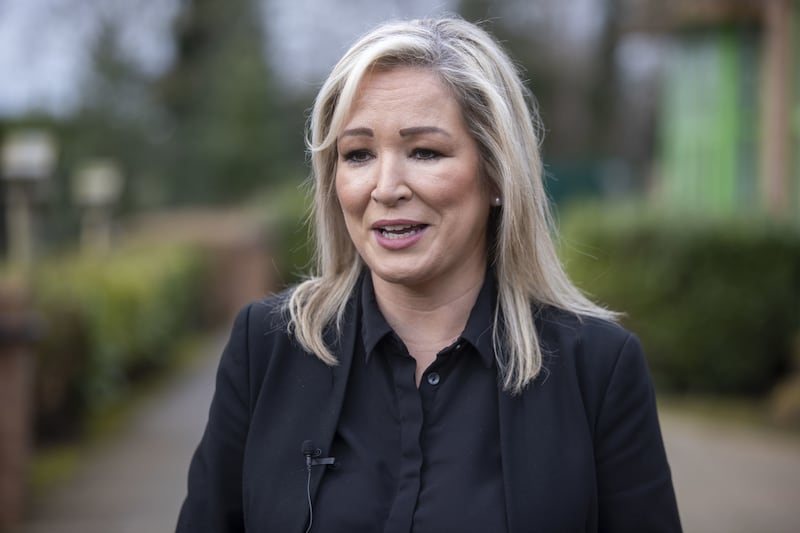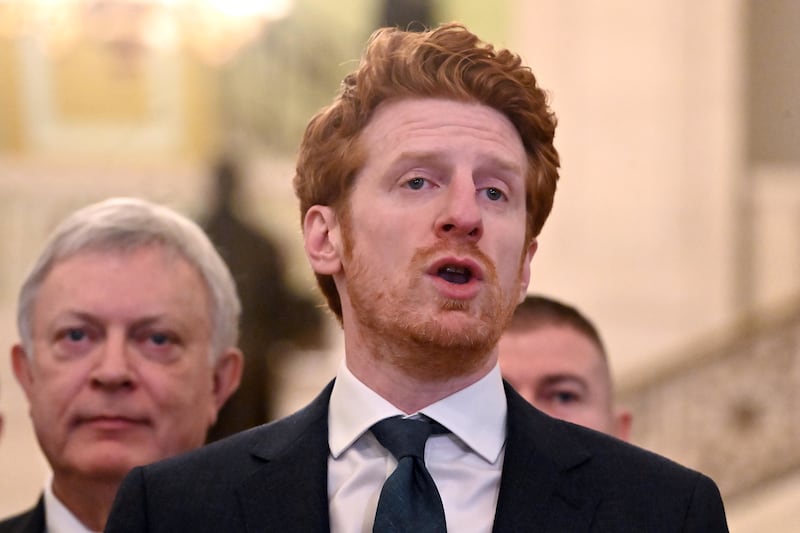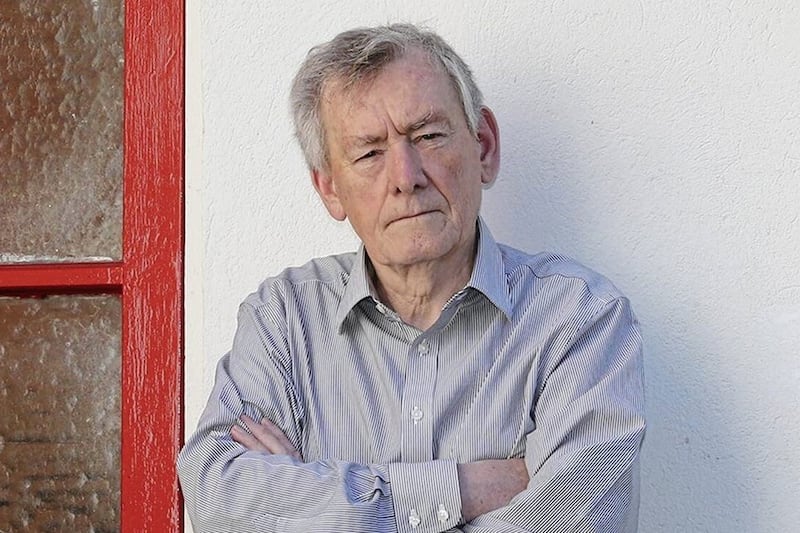ONE of the more reassuring and heartening images to emerge in recent times showed leaders of the DUP and Sinn Féin, as well as other northern politicians, lined up outside Parliament Buildings at Stormont.
They were holding a silent vigil after the tragic and violent death of 23-year-old Ashling Murphy, five days previously, while she was taking a run by the Grand Canal at Tullamore, Co Offaly.
A bouquet of flowers was placed beneath a large photograph of the primary school teacher who was also a traditional Irish musician and keen player of camogie.
Her cultural and sporting interests would not be shared by many unionists but that did not prevent Jeffrey Donaldson, Paul Givan (who also attended a vigil in Lisburn) and others of a broadly-similar background from expressing their sympathy and support alongside Michelle O’Neill, Colum Eastwood and others from the nationalist community.
The implicit message was that we’re all human and if we don’t stand together we shall fall separately. That’s not to downplay the political disagreements between unionists and nationalists, particularly the divide between the DUP and Sinn Féin, but simply to give them credit for putting all that aside on this occasion.
Tensions and differences between the two communities should not be allowed to supersede the common good although there were times in the past when that didn’t seem to be the case.
The start of the northern Troubles features prominently in Sir Kenneth Branagh’s semi-autobiographical film Belfast, but it turns into an inspiring story of how basic humanity can help in coping with difficult and threatening situations.
Three generations of a working-class Protestant family in a mixed area of north Belfast are brilliantly portrayed by a great team of actors ranging from Judi Dench and Ciarán Hinds through Jamie Dornan and Caitrióna Balfe to the charismatic youngster Jude Hill (who gives the best performance by a young actor since Jack Wild’s portrayal of the Artful Dodger in the 1968 film Oliver!), with Lewis McAskie as his older brother.
To top it all, the soundtrack features some of Van Morrison’s classic songs which convey the soul of the city. Don’t miss it.
Meanwhile, if you were a politician, you might wish there was an embargo at times on opinion polls. Regarding the latest LucidTalk survey in the Belfast Telegraph, Sinn Féin will no doubt be happy that its lead over the DUP has gone up from six to eight points, although the fact that the party’s own rating has increased by only one point to 25 per cent might be a source of concern.
Having made a five-point jump to 18 per cent last November, it looked as if the DUP could be on a roll. Another five points this time would have put them almost on a par with SF.
Sir Jeffrey and his colleagues will no doubt be somewhat disappointed to have gone down to 17 per cent in this latest survey instead. I say “somewhat” because they still retain four of the five points they gained last time and of course we have to allow for margin of error.
Given the positive profile at the time of their leader Doug Beattie (this was before his Twitter storm), the Ulster Unionist Party might have expected to gain extra support but it remained on 14 per cent. That’s the same level as Alliance, which has gone down one point since last time.
Alliance has an articulate and impressive leader in the person of Naomi Long, but clearly more is required from the party.
The same could be said of the SDLP, with its highly-articulate representatives, which has gone down one point to 11 per cent.
Down south, the latest Behaviour & Attitudes poll, published three days ago in The Sunday Times, has Sinn Féin still on 34 per cent with Fianna Fáil second at 24 points and Fine Gael in third place with 22 per cent.
It’s difficult to translate polling figures into the likely number of Dáil seats after the next general election but it still looks as if a continuation of the FF-FG alliance, especially with the assistance of the Greens or some other third party, would keep SF out of office.
Another prospect might be a Sinn Féin-Fianna Fáil partnership, which could have interesting consequences, e.g., FF’s long experience in government would be available to Sinn Féin and Fianna Fáil might refresh its image as a republican party.
Whatever happens, there are certainly interesting times ahead.
